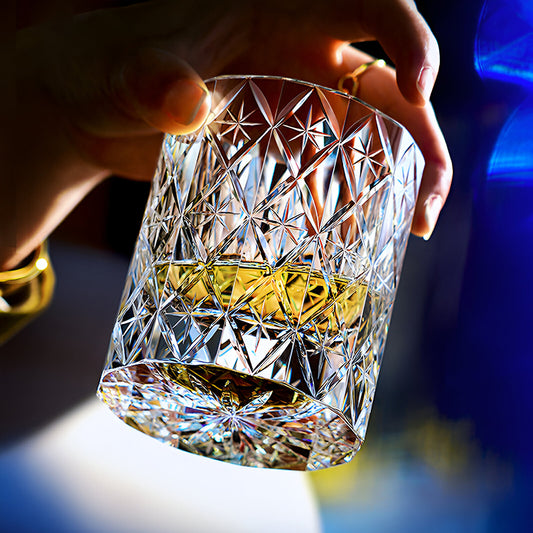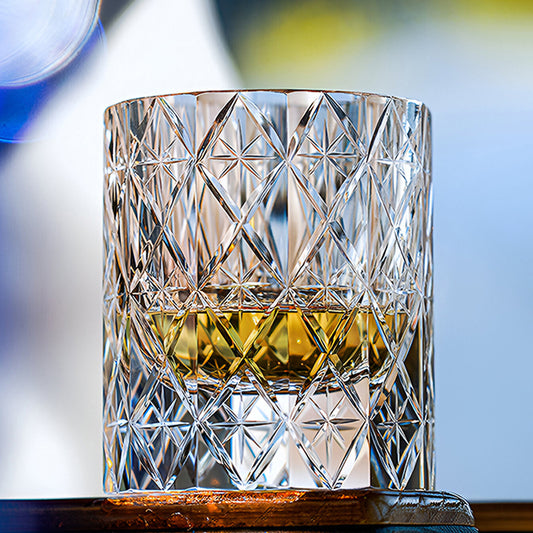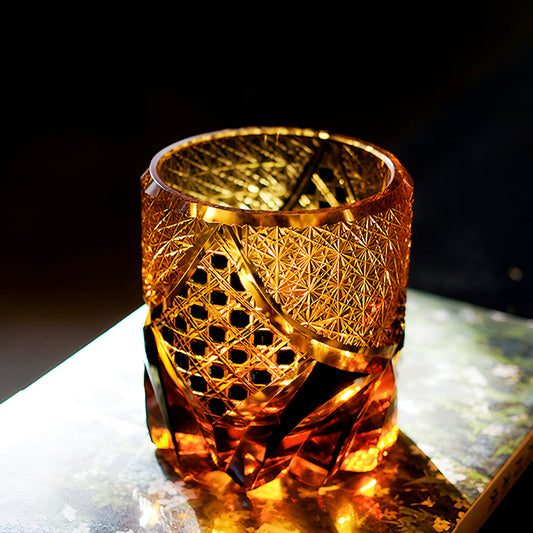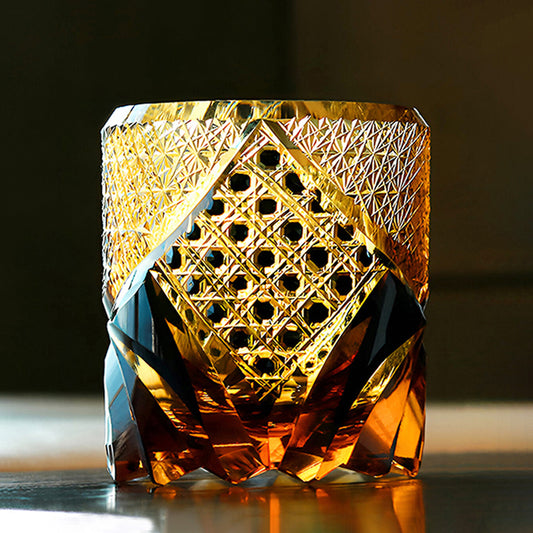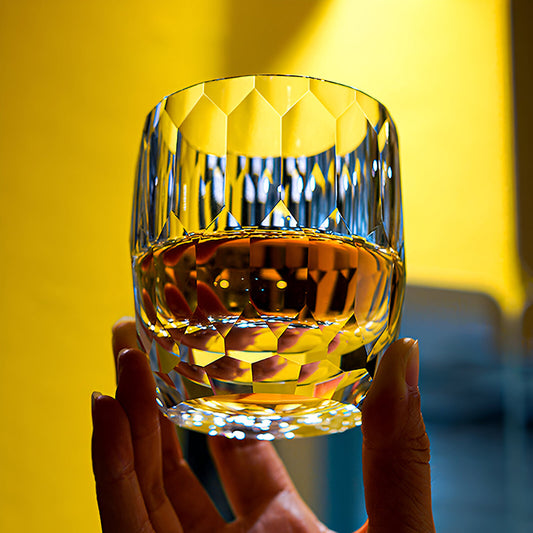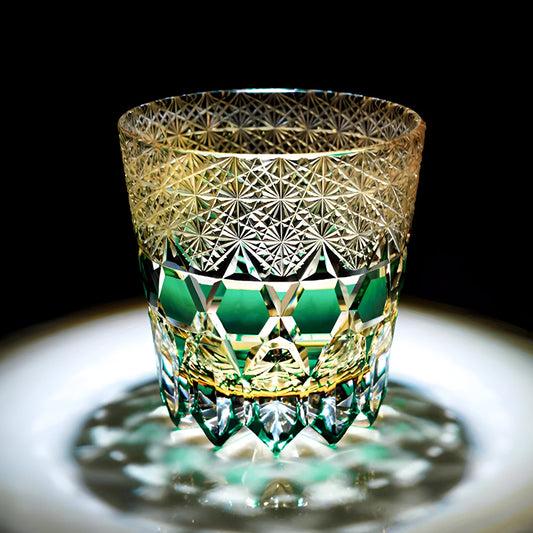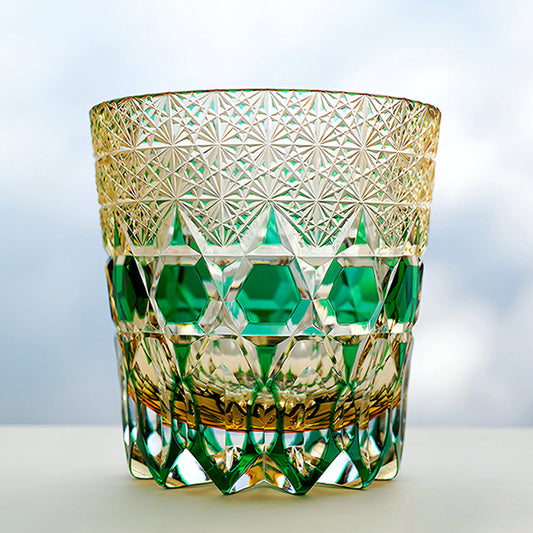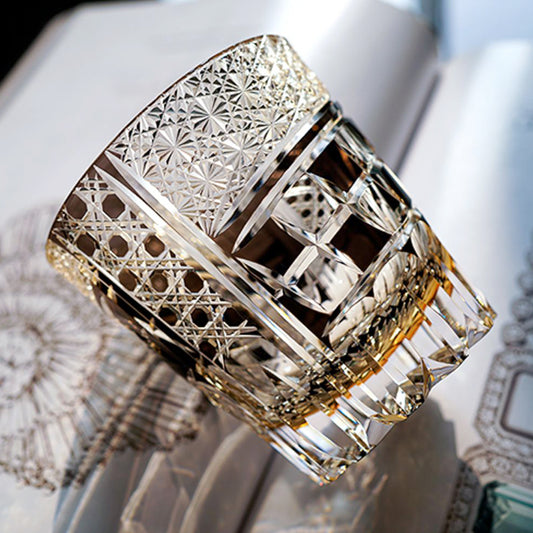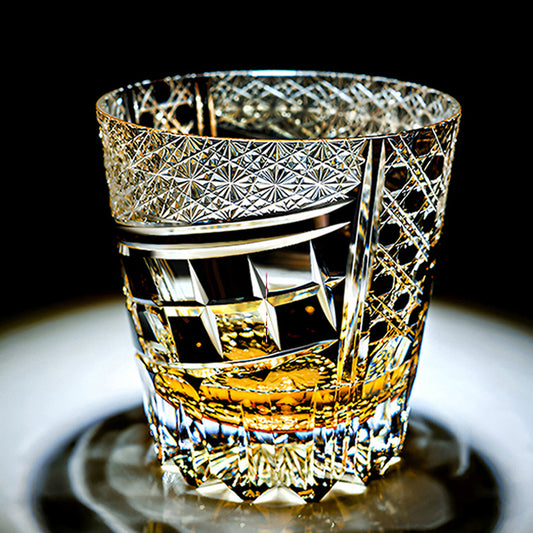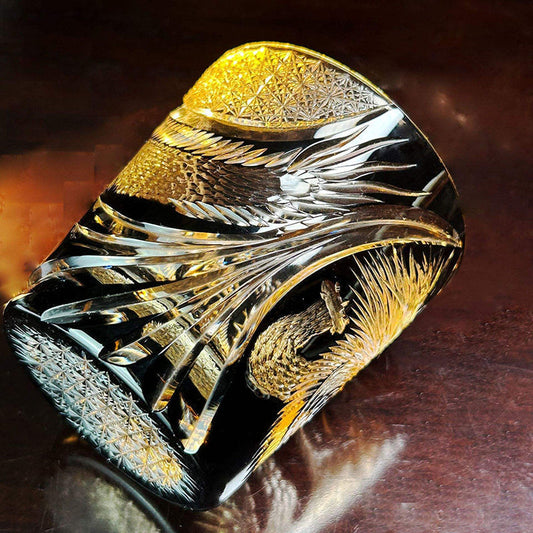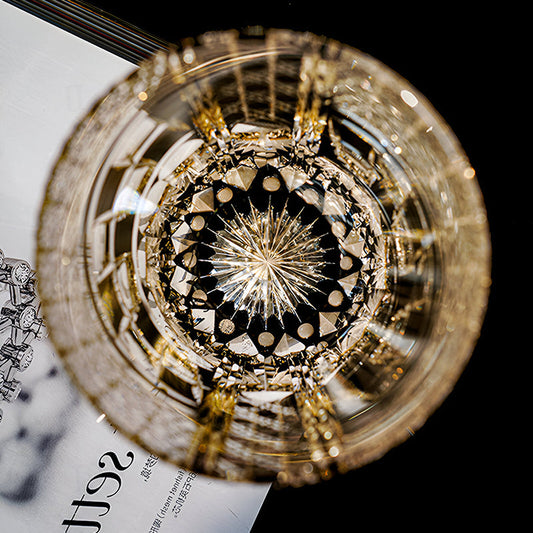Behind the exquisite beauty, how is the simple and patient polishing carried out?
How does Japan's traditional craftsmanship, which has been passed down for nearly two hundred years, maintain vitality through perseverance?
In Japan, 'Edo Kiriko' is a relatively young traditional craft with a history of 180 years..." This is the opening statement made by Torusuke Horiguchi, the third-generation master of Hidetoki, when introducing this national traditional craft of Japan.
"Edo Kiriko" originated in the Edo period when Kyubei Kagaya, who ran a glass shop in Edo (present-day Tokyo), utilized carborundum to carve glass, pioneering this intricate glass carving technique. Subsequently, the renowned British glass carving master, Emanuel Hauptman, was invited to Japan to provide technical guidance to several Japanese craftsmen. Among these artisans was one named Tokumatsu Ohashi, who became the direct mentor of the first-generation Hidetoki, Ichio Horiguchi, passing down the tradition to Torusuke Horiguchi, now the third generation. In 2002, "Edo Kiriko" was designated as a Japanese national traditional craft.
In the 1970s, it was a peak period for the development of Japanese craftsmen. "Edo Kiriko," like other traditional crafts, experienced its own brilliance during this time, with over 700 artisans practicing this traditional craft in Tokyo. However, the bursting of the Japanese economic bubble in the following years dealt a severe blow to traditional crafts, leading to a reduction in the number of craftsmen to around 1/5 to 1/10 of the peak period. "Edo Kiriko" was no exception, and currently, there are less than a hundred people engaged in this craft.

Born in 1976, Torusuke Horiguchi faced an unprecedented crisis in the family business when he entered the workforce. At that time, he was in his early twenties and believed he could withstand failures at that age. Combined with his deep love for this traditional craft, he made the decision to resign from his job and take over the family business. And so, he has been dedicated to this craft for sixteen years.
Born in 1976, Torusuke Horiguchi faced an unprecedented crisis in the family business when he entered the workforce. At that time, he was in his early twenties and believed he could withstand failures at that age. Combined with his deep love for this traditional craft, he made the decision to resign from his job and take over the family business. And so, he has been dedicated to this craft for sixteen years.
When Torusuke Horiguchi took over, the market had undergone dramatic changes. Previously, craftsmen only needed to focus on production. However, the significant contraction of the market required craftsmen to personally handle the entire chain of production, sales, and promotion.
Torusuke Horiguchi then repositioned the "Edo Kiriko" market, shifting from mass-produced items to high-end crafts. This decision was crucial, as high labor costs, expensive land prices, and the rapid development of the logistics industry meant that only products produced using irreplaceable techniques within Japan could survive. This adjustment allowed his business, "Horiguchi Torusuke," to weather the storm.
"Edo Kiriko" is a young traditional craft in Japan. It is not only relatively young compared to other traditional crafts in Japan, but more importantly, it has significant room for improvement in design and craftsmanship. There is still great potential for growth, especially in terms of display and expanding usage. Torusuke Horiguchi calmly and confidently stated, "Previously, 'Edo Kiriko' was mainly used for making utensils, but I believe there is also potential in jewelry, lighting fixtures, and construction materials. Of course, other craftsmen may not share this view, believing in preserving tradition. This is just my personal perspective."
Torusuke Horiguchi emphasized, "Tradition also requires innovation, not for the sake of innovation itself, but based on innovation rooted in aesthetics. In its 180-year history, 'Edo Kiriko' has always focused on removing unnecessary designs and craftsmanship while preserving the essence and incorporating new designs and techniques to reach where it is today. Only by grasping the trends in fashion and design can true transformation of tradition be achieved. Fashion trends change every three to five years, while the trends in Kiriko can last three to fifty years. Over the past 180 years, one can ascertain which changes have been successful and which have failed by observing from different perspectives, thereby understanding the industry as a whole. One must constantly question whether they are in a phase of transformation because prolonged periods of stability can lead to conservatism, missing out on opportunities for change and development. Therefore, one must have a broad view of the industry's development."

When asked how to determine what truly constitutes a good benchmark, Torusuke Horiguchi shared a story that changed his career trajectory.
Once, a very wealthy couple in their sixties ordered a wedding anniversary gift from him. The elderly lady informed him that she had adored "Edo Kiriko" since her student days, spending all her pocket money on collecting it, and still cherished her collection to this day. Torusuke Horiguchi assumed that with her wealth and years of collecting, she must have a vast collection of Kiriko at home. However, upon delivering the order, he discovered that the elderly lady's collection was not as extensive as he had imagined, yet each piece was a captivating item with a unique story behind it. From that moment on, Torusuke Horiguchi began reconsidering the direction of "Edo Kiriko's" development and reevaluated the enchanting stories behind the designs.
Since then, he understood that truly great works do not just reveal their beauty upon completion but rather shine in the aesthetic and delight experienced by users during their usage.



